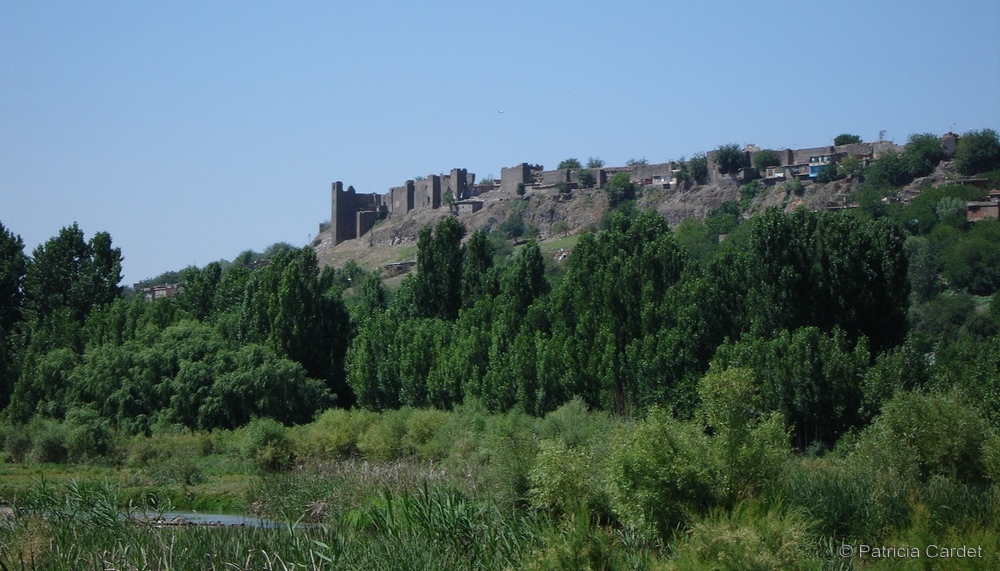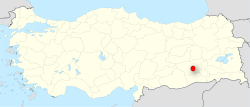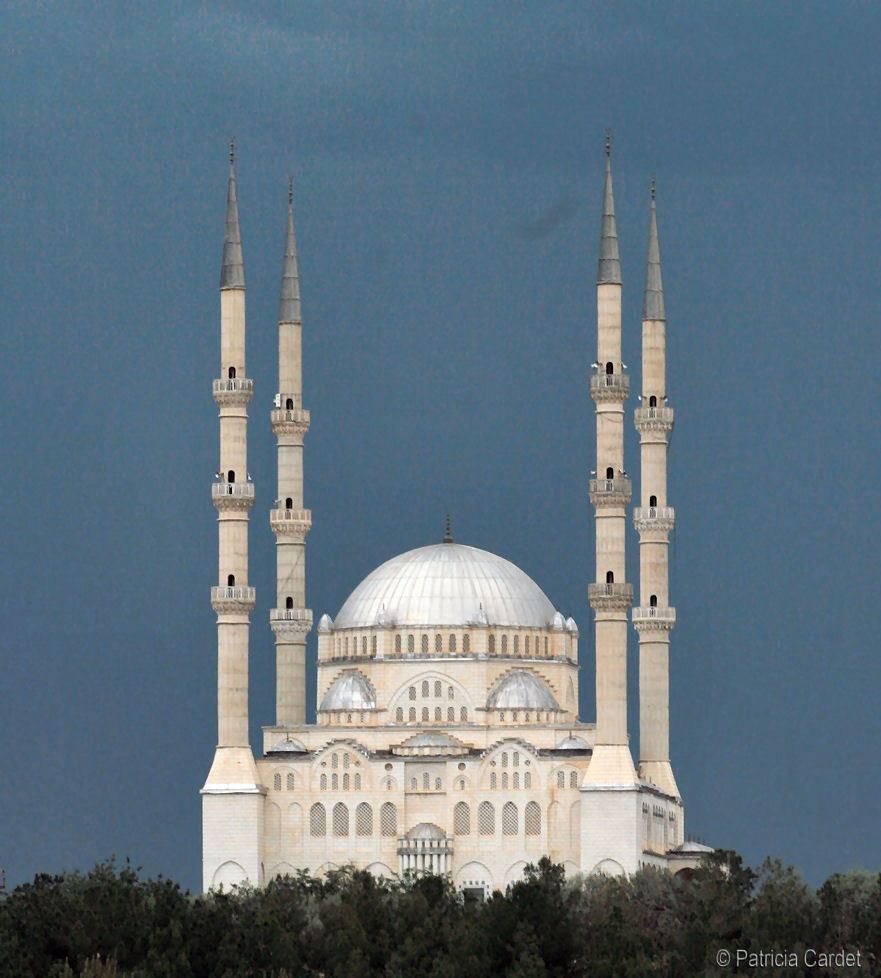Diyarbakır

The city is spread across a basalt plateau, close to the banks of the Dicle (Tigris) river.

The surrounding region is part of Upper Mesopotamia, comprising a large depression crossed by the Tigris River. It lays on the Arabian tectonic plate and is separated from eastern Anatolia by the Taurus Mountains in the north and from the Mesopotamian plain by the Mardin hills in the south; the Karaca Mountain lies to the west.
Diyarbakır (Arabic دیاربکر, Diyâr-i Bekr land of the Bekr' (from Persian); Kurdish Amed; Zazaki language Dêrbekir; Syriac ܐܡܝܕ Āmîḏ; Greek Ἄμιδα Amida; Armenian Ամիդ Amid), has been a cradle of 26 civilizations during its 5000 years history.
Amida, an ancient town predating Roman colonization in the 3rd century ad, was enlarged and strengthened under the Roman emperor Constantius II, who also erected new walls around the city (349). After a long siege, it fell to the king of Persia in 359. It changed hands frequently in the later wars between the Romans and the Persians and was in Byzantine hands when the Arabs took it (c. 639). With the weakening of ʿAbbāsid control over the region and the emergence of the Ḥamdānid dynasty of Mosul (in Iraq) in the 10th century, Amida was ruled by various Arab, Turkish, Mongol, and Persian dynasties until its capture by the Ottoman sultan in 1516. Capital of a large and important province under the Ottomans, it regained its prosperity. Its location, near the Persian frontier, also gave it strategic importance, and the town was used as a base for armies facing Persia.

The black basalt triple walls which encircle the old town give the city a rather ominous appearance. These ramparts are about 5 km in length, have 16 towers and five gates, are decorated with inscriptions and bas-reliefs, and represent a superb example of medieval military architecture. The Diyarbakır ramparts are famous for being the longest second ramparts after the great wall of China. They were restored by Byzantine Emperor Constantinus in 349 B.C., but the exact date of their construction is not known.

Magnificent with their historical and architectural properties, Nebi Mosque and Safa Mosque are the most famous mosques of Diyarbakır. The Nebu Mosque represents the typical Ottoman style, while the Safa Mosque exhibits Persian influences in its tiled minaret. The Ulu Camii (Great Mosque), built by the Seljuk Sultan Melik Shah, is notable for its original design and for its utilization of both Byzantine and more ancient architectural materials. It is “the oldest mosque within the borders of Turkey … of Diyarbakir, dating back to the seventh century with several later restorations”.The mihrab (prayer niche showing the direction to Mecca of the nearby Mesudiye Medrese is made of the local black basalt.

The third century Arameic church of the Virgin Mary, Meryem Ana Kiliesesi, which is still in use today, also makes for an interesting visit.

The Deliler Han, 1527, by the Mardin Gates, converted and refurbished into a hotel, recreates the atmosphere of the days where the caravans stopped in Diyarbakır. Diyarbakır has important hans because of its being one of the center of the Historical Silk Road. Inside the Deliller Inn, Hasan Pasha, Çiftehan and Yeni Inn, there are shopping stores that are selling rugs, carpets and silver embroidery as it was usual in history.
Just outside the city walls, by the river, stands Atatürk's house, now a museum.
South of town at the Dicle bridge, built in 1065, you can take a great picture of the Dicle river, the bridge and the city walls.
Museums
Archeology Museum: First museum of Diyarbakır was opened in 1934 in the Senceriye (Zinciriye) Theology school, an extension of Ulu Mosque. In 1985 it is transported to a new building on Elazığ Avenue. Traces remaining from Neolithic Age, Old Bronze Age, Urartu, Asurian, Roman, Byzantine, Seljuk, Akkoyunlu and Ottoman periods have been exhibited with a chronological order. Coins, local materials, ethnographic works of art, the majority of which remained from Artuklu period have also been exhibited in the museum.
Ziya Gökalp Museum - House: One of the samples of typical civil architecture of Diyarbakır, this house was built in 1808. This house where the famous intellectual Ziya Gökalp was born in in 1876, was bought from his inheritors in 1953, and opened to visit in 1956 as a museum-house. Beside the items belonging to the poet, ethnographic works of art of the region are exhibited at the museum.
Cahit Sıtkı Tarancı Museum - House (Culture Museum): The Musuem is in the Diyarbakır city center, at Camii Kebir quarter, on Cahit Sıtkı Tarancı street, dated to 1820. One of the most beautiful sample of typical civil architecture of Diyarbakır, it has survived to our present day.
1Reference: E. Akurgal. The Art and Architecture of Turks, Rizzoli International Publications, NY, 1980.
Sources: Turkish Ministry of Culture and Tourism Ministry of Culture and Tourism, Turkish Cultural Foundation, Wikipedia, Britannica
